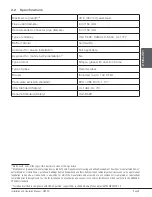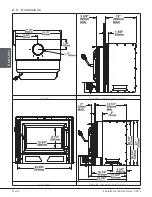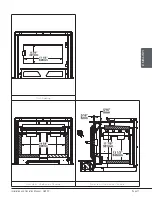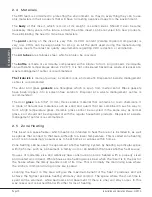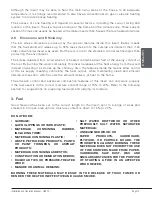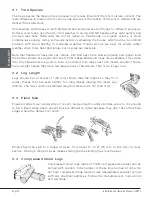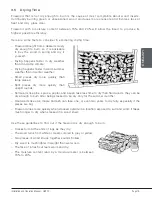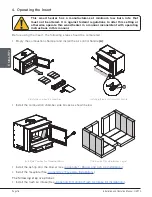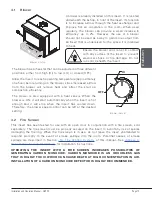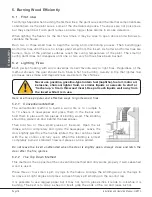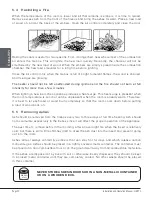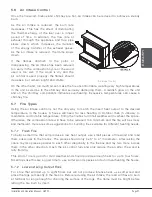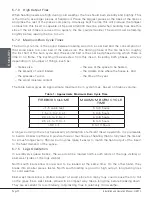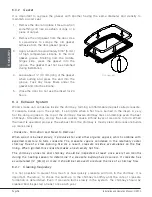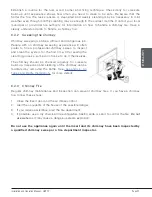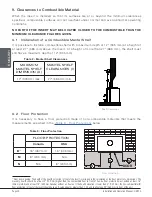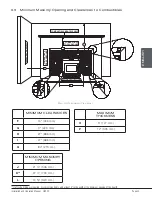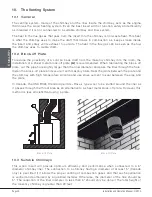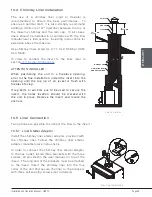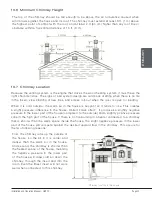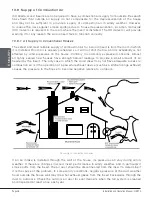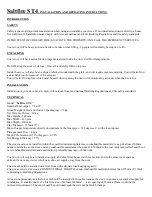
Page 23
Installation and Operation Manual - HEI170
ENGLISH
5.7.6 Carbon Monoxide
When there is no more flame in the firebox and there are still some unburned logs, check outside
if there is smoke coming out of the chimney. If this is the case, it means that the fire is out of air
to burn properly. In this situation, the level of CO increases and it is important to react. Open
the door slightly and move the logs with a poker. Create a passage for the air below by making
a trench with the ember bed. Add small pieces of wood to restart the combustion.
6. Maintenance
This heater will give many years of reliable service if used and maintained properly. Internal
components of the firebox such as firebricks or refractory panels, baffle and air tubes will
wear over time. Defective parts should always be replaced with original parts see
«Appendix
7: Exploded Diagram and Parts List»
. To avoid premature deterioration, follow the lighting and
reloading procedures in section
«5. Burning Wood Efficiently»
and also avoid letting the heater
run with the air intake fully open for entire burn cycles.
6.1 Insert
6.1.1 Cleaning and Painting
Painted and plated surfaces can be wiped down with a soft, damp cloth. If the paint is scratched
or damaged, it is possible to repaint the insert with a heat-resistant paint.
Do not clean or
paint the insert when it is hot.
Before painting, the surface should be sanded lightly with
sandpaper and then wiped off to remove dust. Apply two thin layers of paint.
6.1.2 Refractory Material and Baffle
Inspect the firebricks or the refractory panels and the baffle for damage periodically and replace
anything that is cracked or broken.
Operation of the heater with a cracked or missing baffle may cause unsafe temperatures
and hazardous conditions and will void the warranty.
6.2 Glass Door
6.2.1 Cleaning
Under normal conditions, the door glass should stay relatively clear. If the firewood is dry
enough and the operating instructions in this manual are followed, a whitish, dusty deposit will
form on the inner surface of the glass after a week or so of use. This is normal and can be easily
removed when the heater is cold by wiping with a damp cloth or paper towel and then drying.
When the insert runs at a low combustion rate, light brown stains may form, especially in the
lower corners of the glass. This indicates that the fire has been smoky and some of the smoke
has condensed on the glass. It also indicates incomplete combustion of the wood, which also
means more smoke emissions and faster formation of creosote in the chimney.
The deposits that form on the glass are the best indication of the fuel quality and success in
properly using the insert. These stains can be cleaned with a special wood insert glass cleaner.
Do not use abrasive products to clean the glass.
The goal should be having a clear glass with no brown stains. If brown stains appear regularly
on the glass, something about the fuel or the operating procedure needs to be changed.
Содержание HEI170
Страница 2: ......
Страница 6: ...Page 6 Installation and Operation Manual HEI170 ENGLISH CERTIFICATION PLATE ...
Страница 51: ......

